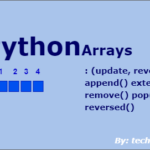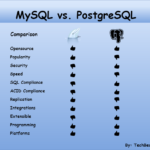Do you wish to become a machine learning engineer? Yes, why not, you should because this job has the highest number of openings in 2019 with $75K as the baseline salary. Also, it is an engineering stream, which is highly technical and provides countless opportunities to learn. By working in this field, you can not only improve your finances but also grow intellectually.
This post intends to highlight all the steps that are essential for becoming a machine learning engineer. You’ll get to learn – What is Machine Learning, the job of a Machine Learning Engineer, and his/her roles and responsibilities. And finally, we’ll tell you what it takes to become a Machine learning Engineer.
Guide to Become a Machine Learning Engineer

What is Machine Learning (ML)?
Machine Learning (ML) is a field of computer science that aims to build programs that complete a task, not by explicit instructions but by learning from data and patterns. It mainly provides algorithms and models that applications can use for training purposes.
It can be classified into three types:
Supervised learning
This method works when a specific target is to be achieved by using a given set of inputs known as predictors. Here, you build a function that produces the desired output from the input set. This model continues to run until you get the desired level of accuracy. The following are the algorithms that support this type of learning.
- Regression
- Decision Tree
- Random Forest
- KNN
- Logistic Regression
Unsupervised learning
It caters to problems when there is input data but no output variables to predict. The goal here is to find different patterns in the given data and distribute them in segments. The algorithms discover the right course on their own. Some of these are:
- K-means
- Apriori
Semi-supervised learning
It works on problems where there is input data, but only some of it is labeled while the majority of it is unlabeled. We mean the situation that can go either side (Supervised and Unsupervised) but none seem to work.
A simple but real example is you have a pile of annual household bills. Only some of these carry a label (e.g., medical or grocery receipts), but most are unclassified. Some of these methods are:
- Generative
- Graph-based
- Self-training
Real-time Examples
Machine learning is an omnipresent concept. Some of its real-world applications are:
- It is a wide-open fact that Google uses a machine-learning algorithm (RankBrain) to combine signals to improve search results.
- Amazon uses machine learning to observe purchasing patterns and to identify illegal transactions.
- Apple has provided a neural engine built-in to the A11 CPU to power image and speech processing apps.
- Boeing is also using ML technology to track the behavior of its air carriers by processing flight history and equipment performance.
What is a Machine Learning Engineer?
A machine learning (ML) engineer is a professional who can use ML algorithms and deliver a working software solution or product. He should have the mindset of a Software Engineer to understand the problem at hand. Moreover, he should be able to use statistical analysis and predictive models to devise a solution. His/her end goal is to build software that doesn’t require any supervision.
So, it is easy to identify from the above description that it can be you who can become a machine learning engineer. You only need to focus on learning ML skills and keep on building your knowledge.
Roles And Responsibilities
The primary task of an ML engineer is to build intelligent software products that use ML algorithms and models. However, there is more to this role. You can find some here:
- Carry out POC (proof of concept) and then translate them into products.
- Analyze and propose which ML model is suitable for the job.
- Prepare a detailed design of the feature to be implemented.
- Do try different combinations of ML algorithms and pick the most appropriate ones.
- Collect data by creating or using web scraping tools.
- Prepare data sets for training, testing, and validation.
- Run tests for different sets of inputs and improve the solution.
- Train the product and aim for the highest level of accuracy.
It could look like a lot of work for a fresher into machine learning but going to be somewhat easier.
Become a Machine Learning Engineer
You will need all the essential skills that we expect a software engineer should have. For example, Problem-solving and logical thinking, awareness of data structures like arrays, stacks, queues, binary trees, and graphs. Also, knowledge of sorting/searching algorithms would come in handy.
Now, here comes the guide to enter into the machine learning space:
Basics Of Statistics
Statistics is a part of mathematics that gives tools to collect, analyze, interpret, present, and organize data. Hence, it becomes the first and foremost area for an ML engineer to learn.
Using statistics, you can gain deeper insights into patterns in the data and can apply other techniques to get relevant information. Here are the five main statistics concepts that you should know.
Statistical Features
It is probably the most used statistics concept in machine learning. These are also known as the Measures of Central Tendency. Read about some of these below:
- Mean – It is the result of a division of all data values by the total number of data points.
- Median – It refers to the value that positions in the middle of a sample.
- Mode – It refers to the data value that appears most frequently in a given set of values.
- Dispersion – It is an indicator of how much variation is there among several data points.
- Variance – It indicates how much the data values are deviating from the Mean.
- Standard deviation – It is merely the square root of the variance.
- Correlation – It is the extent to which two or more variables vary together.
- Co-variance – It is the measure of how two variables vary from each other.
Probability Distributions
It is a function that gets the probabilities of all possible values in the test. A distribution can be Uniform, Normal, or Poisson type.
Dimensionality Reduction
It is used to reduce the number of dimensions the data set has.
Over and Under Sampling
These are techniques used to address classification problems.
Bayesian Statistics
It is a statistical way to include probabilities for solving ML problems. It helps in decision-making.
Learn Python
You need to start brushing up on your Python programming skills. It is the language of choice for most machine learning engineers. Many tools for data have built-in Python support or provide APIs for easy Python usage.
Python’s syntax is quite easy to pick up. There are tons of information and online resources available for learning. It supports all sorts of programming models such as functional or object-oriented (OOP) programming.
However, you could find it hard to pick up the indentation requirement to run Python code. Whitespaces do matter a lot in Python.
Since you wish to become a machine learning engineer, you likely join a team and build critical software products. So, make sure you refresh all software engineering best practices you learned during college.
Use collaborative tools such as Github, and write thorough unit tests for validation. Moreover, adopt CI and try tools like Jenkins to make sure your code doesn’t crumble.
One thing to consider: Choose the Best Python IDE for Machine Learning. Go through the post quickly and know which IDE you feel getting along with.
Machine Learning Algorithms
Once you have started playing with Python and writing code with it, it’s time to use machine learning algorithms.
You should know what algorithms to use. This knowledge will let you create models with ease.
Better you begin with the basics. Remember the fact that you are not going to get any free lunches. We mean that no algorithm is perfect. It might give you the optimal result, but you have to dig into each of them.
- Linear Regression – It’s used to predict values within a continuous range.
- Logistic Regression – It is a predictive analysis algorithm and uses the concept of probability.
- KNN Classification – It is used to solve both classification and regression challenges.
- Support Vector Machine (SVM) – It creates a line or a hyperplane for separating data into classes. It does both classification and regression on the data.
- Decision Trees – It has two entities, decision nodes, and leaves. It creates a training model by learning from decisions made for previous data.
- Random Forest – It operates by ensembling decision trees at training time and outputs the classification of each tree.
- Artificial Neural Network – It simulates how biological nervous systems work, such as the brain.
- K-means Clustering – It is used when you have unlabeled data.
- Naive Bayes theorem – It provides a way to update existing predictions given new data.
- Recurrent Neural Networks (RNN) – It is a type of artificial neural network that adds weights to the layers for maintaining an internal state.
Learn to Work with Datasets
The datasets provide a means for machine-learning research. They are crucial for building ML-based applications. And it’s hard to find high-quality data for both supervised and semi-supervised learning algorithms.
However, there is a helpful list of data sources published on Wikipedia, which you can search and go through. You need to be sure what kind of data you need. Also, once you possess it, there are some tasks you should perform.
Make data consistent
You need to translate a dataset into a format that is fit for your machine learning purpose.
Also, format consistency is a must when you have data from varied sources. There are chances that someone has edited the dataset manually. So, make sure that it shows all variables as expected. It may include dates, currency, some ID, and all that have a fixed style. So, you need to keep them consistent across the entire dataset.
Reduce data
It is usual to wish for data as much as possible. But, a majority of it may not be usable for you. In such cases, you need to reduce the dataset.
There are three approaches you can follow:
- Attribute sampling – You can decide to reduce based on the target attribute. Keep what is critical and leave what is adding to the complexity.
- Record sampling – You delete missing or erroneous records to increase accuracy.
- Aggregating – You divide the entire data into multiple groups and give a number to each group.
Data Cleaning
Incorrect data is an accuracy killer. There could be many reasons for this, like missing values.
So, it is crucial to pick the right way to do the cleaning such as:
- Replace missing values with dummy values
- Replace the missing numerical values with mean values
- For categorical records, use the most common items to fill in.
Practice with Machine Learning Framework
You have so far learned to explore machine learning algorithms and datasets. As a next step, try to use different frameworks such as TensorFlow, MXNet, and PyTorch.
PyTorch
It is a Python library that has two main features:
- Tensor computation using a powerful, strong GPU
- It has built-in Deep Neural Networks
It is also possible to extend this framework using Numpy and Scipy.
MXNet
It is a deep learning library famous for efficiency and flexibility. You can combine flavors of symbolic and imperative programming for optimization.
A dynamic dependency scheduler parallelizes its operations on the fly. It has a graph optimization layer to make execution faster.
This library is lightweight and can operate with multiple GPUs.
TensorFlow
It is a library that was declared as open source by Google. It does numerical computing using graphs.
A graph has two elements:
- Nodes – They represent mathematical operations.
- Edges – They represent the multidimensional arrays (or tensors) that hold data.
It is also flexible to scale computing by adding more GPUs and doesn’t require changing the code. It offers a suite of tools for visualizing TensorFlow results.
End-to-End Solution
Machine Learning module is one of the components of a much bigger solution. So, you should know how the entire system operates. You’ll need this knowledge to integrate the ML module.
Also, if you are familiar with the end-to-end flows, then you can quickly point out bottlenecks and fix them. You can read about Software engineering best practices and models in the below post.
You can set up Docker to provide the development and run-time infra for your machine learning project. Also, push code changes into GitHub, and use Jenkins to build and run tests. If successful, then push the latest Docker images to its repo.
Store data in a central repo (say AWS S3 buckets), and make scripts to fetch data on the local system. After that applications, CI jobs, and engineers can access the latest data. You should also write efficient automated tests. Try using Python’s unit test framework, which requires less effort to automate.
We hope that after wrapping up this post, you have got enough information to become a Machine Learning Engineer. Believe, a successful career is just a few steps away. So, act now and make the most of it.








